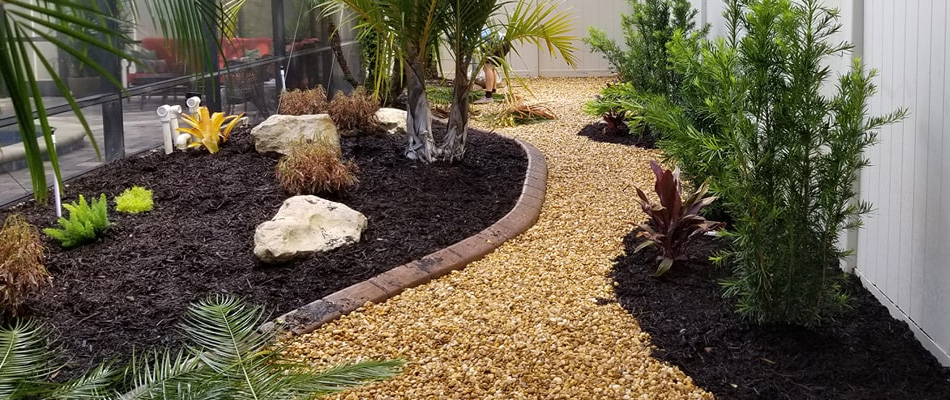Not known Factual Statements About Hilton Head Landscapes
Not known Factual Statements About Hilton Head Landscapes
Blog Article
3 Simple Techniques For Hilton Head Landscapes
Table of ContentsGetting The Hilton Head Landscapes To WorkThe Facts About Hilton Head Landscapes RevealedHilton Head Landscapes - QuestionsGetting The Hilton Head Landscapes To WorkExamine This Report on Hilton Head LandscapesThe 10-Minute Rule for Hilton Head LandscapesHilton Head Landscapes - Questions
Line creates all types and patterns and can be utilized in a variety of ways in the landscape. Line in the landscape is created by the side in between two materials, the outline or shape of a kind, or a lengthy direct attribute. Lines are a powerful device for the developer due to the fact that they can be utilized to produce a boundless range of shapes and types, and they regulate activity of the eye and the body.

Lines can have several features, such as those defined below, yet they generally serve different objectives. Figure 1. Lines in the landscape - Landscaping bluffton sc. The homes of lines establish just how individuals reply to the landscape, both emotionally and physically. Straight lines are structural and forceful; they create an official personality, are normally linked with a balanced design, and lead the eye straight to a focal point.
The 7-Second Trick For Hilton Head Landscapes
Rounded lines create a casual, all-natural, unwinded character that is connected much more with nature and asymmetrical equilibrium. Bent lines relocate the eye at a slower rate and add enigma to the space by developing concealed views.
Upright lines in the landscape consist of tall, narrow plant product, such as trees, or tall frameworks, such as an arbor or a bird residence on a post. Horizontal lines relocate the eye along the ground aircraft and can make an area feel bigger. Low lines are more controlled and create a sensation of remainder or repose.
Some Known Factual Statements About Hilton Head Landscapes
Low lines are created by reduced yard walls, sidewalks, and brief hedges. Lines are used to attract forms on a plan. In plan sight, they define plant beds and hardscape areas. Lines are additionally developed by the vertical kinds of developed attributes and plant material. There are three primary line kinds that create form in the landscape: bedlines, hardscape lines, and plant lines.
Bedlines connect plant product to your home and hardscape due to the fact that the eye complies with the line, relocating the look through the landscape. Hardscape lines are created by the edge of the hardscape, which delineates the developed framework. Line can also be produced by lengthy and slim materials, such as a fence or wall surface.
Hilton Head Landscapes for Beginners
Kind is located in both hardscape and plants, and it is generally the dominant visual component that spatially organizes the landscape and typically determines the design of the garden. The form of frameworks, plant beds, and yard accessories additionally identifies the overall type theme of the garden. Official, geometric types include circles, squares, and polygons.
Plants create kind in the yard with their lays out or silhouettes, yet kind can also be specified by a space or negative area in between plants - bluffton landscaping (https://on.soundcloud.com/9G2jvdoH5UDcTrYM8). Circles can be full circles, or they can be split right into fifty percent circles or circle sectors and integrated with lines to create arcs and tangents
Not known Facts About Hilton Head Landscapes
Circles can likewise be extended right into ovals and ellipses for more selection and rate of interest. Circles are a strong style form because the eye is always attracted to the facility, which can be used to emphasize a focal factor or attach other types. Number 2. Round types in hardscape and grass panels.
The square form can additionally be fractional and pre-owned consistently to produce a grid pattern. Unlike circles, squares are stronger on the edges, which can be lined up or overlapped to produce unique patterns and more complicated forms. Polygons are many-sided kinds with straight sides. Triangulars, for instance, are three-sided polygons.
Twisting lines commonly mimic the all-natural training course of rivers or streams and can be called smooth lines with deeply bent wavinesses. Twisting lines (Figure 3) function well for paths, plant bedlines, and dry stream beds. Twisting lines can add passion and secret to a garden by leading viewers around edges to discover new sights and spaces.
Hilton Head Landscapes - Truths

Typical plant types are well established and standardized, as kind is the most consistent and recognizable attribute of plants. Kind can additionally be developed through the massing of plants, where the overall mass produces a various form than an individual plant.
A very different kind must be used with careone or two work well as a prime focus, however a lot of develop chaos. All-natural plant kinds, as opposed to over-trimmed forms, must develop the bulk of the make-up. The significance of total type is more or much less depending on the checking out perspectivethe form of a tree can show up rather various to a person standing under the cover versus checking out the tree from a distance in an open field.
The 45-Second Trick For Hilton Head Landscapes
Plant types additionally develop and specify the gap or open rooms between the plants, producing either convex or scooped types in deep spaces. High-arching tree branches normally produce a concave open space under the branches, and a round cover with reduced branches loads the room to produce a convex form in the open area under the tree.

Report this page